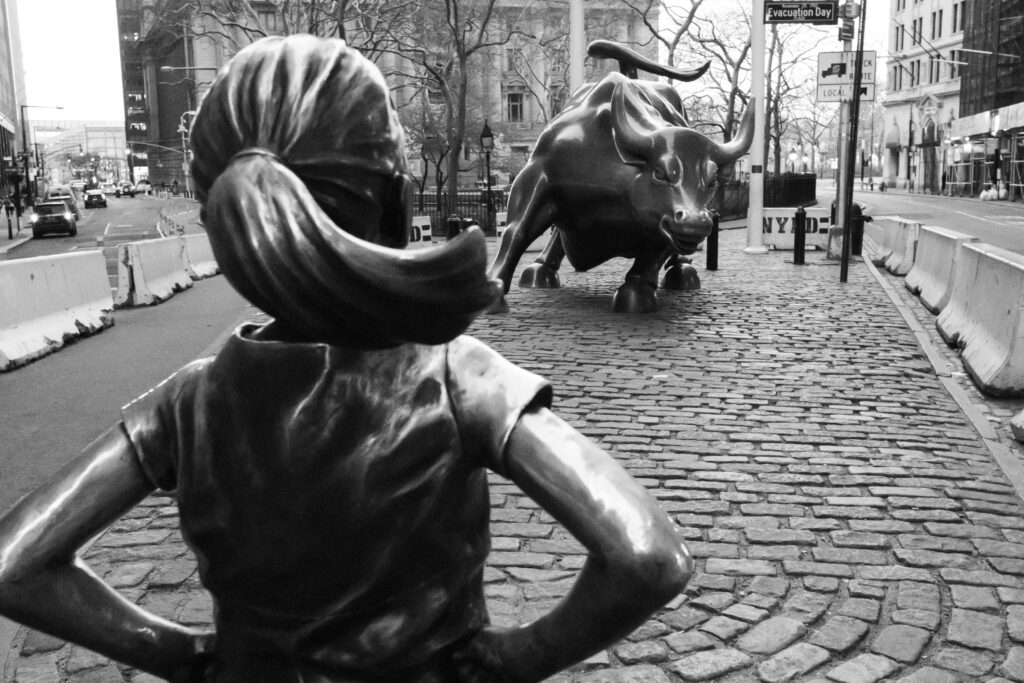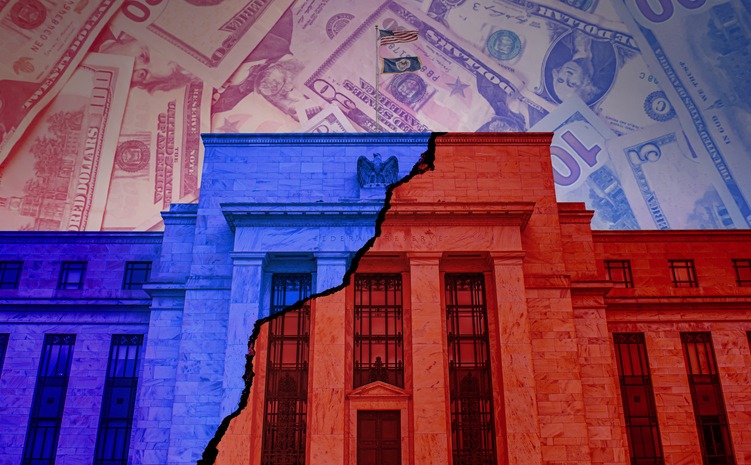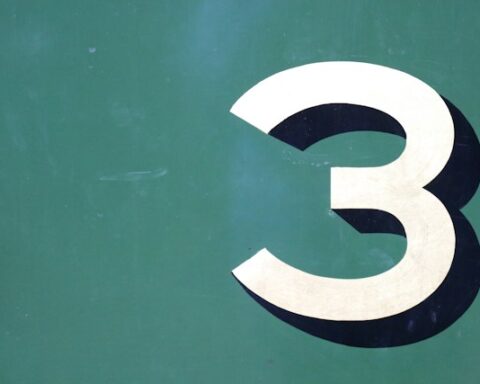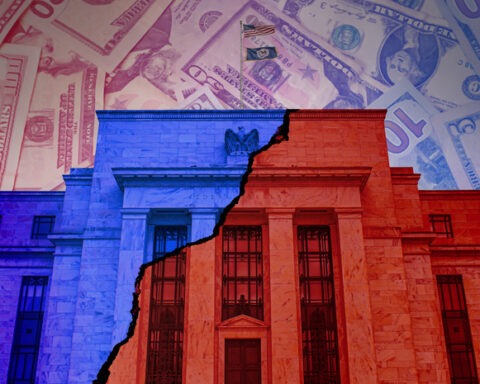As I drove up and pulled into a gas station earlier this year, I saw something strange on the fuel dispenser. When I got out of my car, I saw it was a sticker.
The sticker was of Donald Trump pointing at the sales price, which read, “Miss me yet!”.
As I looked around, I saw a sticker on most dispensers. Some were stickers of Joe Biden and read, “I did that!”. Others were different versions of Trump.
As the weeks passed, I also saw these stickers in grocery stores pointing at food prices, and while they were funny, they were all obviously implying one serious thing: Joe Biden is the reason for inflation and why we have these economic problems.
But why do people think that? Why do we blame our presidents for economic problems like these?
Outside of being an easy political jab, like the ones I talked of in my article, Party Inc., it doesn’t make any sense if we understand basic economics.
Yet politicians blame their rivals and take credit for economic issues like these. For example, in his farewell address, Barack Obama mentioned gas being around 2 dollars a gallon.
However, our economy does not work this way. It’s much more complex than just who our president is and has many elements.
It’s a capitalist market economy, first and foremost, which the government can influence through a combination of fiscal policy and monetary policy. And there are many people and organizations involved in both.
Fiscal policy is taxing and government spending, which Congress and the president control and can get very politicized.
Monetary policy is control over the money supply and is managed by the Federal Reserve, or the Fed for short. The Federal Reserve is our central bank and government agency designed to be independent of political influence.
While it may be complex and not have easy sticker solutions, we must accept the truth of the economy: that basic economic fundamentals and the government policies surrounding them are what really shape the economy.
And that the Fed, forced in part due to divided politics, enacted rampant monetary policy, which both helped and hurt the economic landscape of the past few decades.

Bubble, Bubble, Political Trouble
Economics and the role of fiscal and monetary policy in our politics may not be the most exciting topics to many, and maybe that’s why their complexities get overlooked, but their influence over the last 15 years has shaped our economy.
While it is incredibly complicated, the 2008 Great Recession is the starting point for everything.
At a basic level, the reason for the recession is this. In the housing market, borrowers who couldn’t afford mortgages took out subprime mortgages, which were mortgages for people with poor credit, from lenders who knew the borrowers couldn’t afford it. Banks bundled these mortgages and others into risky mortgage-backed securities, assets that could be traded. And investors bought those securities.
This housing bubble eventually blew up when the subprime borrowers couldn’t pay for the mortgages and foreclosed on their homes. The mortgage-backed securities lost value, the banks and investors lost a bunch of money, the financial system collapsed, and it almost brought down the entire economy.
That’s a lot, and skimming the surface, however, the government’s response is important for our purposes.
The Bush administration and Congress used fiscal policy to put billions into the economy through programs like the Troubled Asset Relief Program, and the Federal Reserve used monetary policy to lower interest rates.
But that wasn’t enough, so the Fed also implemented a policy called quantitative easing, which is just the Fed printing new money. This new money went into the economy in ways like buying up financial debt.
This continued into the Obama administration, and Obama and Congress passed another stimulus bill, the American Recovery and Reinvestment Act, in 2009.
However, these actions created a standard of free money and led to much resentment because of how that money was used.
This resentment is one piece, maybe the foundational piece, that moved our politics into the highly polarized political landscape we have today.
The Occupy Wall Street movement and the Tea Party were created out of this resentment. Both were types of populist movements with different themes.
The Occupy movement was concerned with the big banks getting bailed out at the expense of the people, financial greed from these banks taking the free money to make themselves richer, and a jobless economic recovery with increased wealth inequality.
The Tea Party was also concerned with the big banks getting bailed out at the expense of the people. However, it was also angry with government spending, due in part to the America Recovery and Reinvestment Act. They felt these bailouts and spending went too far, and we needed to go back to a position of limited government.
Now, these types of populism can be and were a good thing. The people need to keep the government honest and accountable, especially when the government does very little for the people.
But when party politics began to get involved, it morphed into extreme division. The far-left Democrats and the far-right Republics in our politics have roots in these two movements, among other things.
However, we need to return to the earlier point of understanding economics in totality. As I said, these movements were important, but the tough fact is that if the government hadn’t done what it did, the entire economy would have stopped.
Everyone’s bank accounts would have been empty, and credit would basically have been ineffective.
The government and the Fed did what they needed to do, and there is no way around that if we understand economics.
However, the government could have done two other things, which is why the movements mentioned earlier are important.
First, the government should have used top-down and bottom-up approaches to the recovery.
This would not only have prevented the economy from collapsing but also created a uniform recovery. It could have used policies to help people with their mortgages, like renegotiating them, and focused on jobs and the labor market.
Second, it could have held the financial sector accountable. And while it did pass legislation, the Dodd-Frank Wall Street Reform and Consumer Protection Act, which was much-needed financial regulation, it didn’t directly punish the bad actors for getting us into this mess.
This was a mistake on Barack Obama’s part because it created much of the anger behind the movements, which, as mentioned, morphed into the political sector.
Once that happened, fiscal policy became more difficult to implement, and the Federal Reserve felt more pressure.

Inflation Nation
As the 2010s marched on, the far-left Democrats and far-right Republicans gained more control in government.
With these bases gaining more traction, division in Congress and with the president prevented anything of substance from getting passed in the country’s fiscal policy. The Republicans passed tax cuts under Trump, but it was hardly a bipartisan effort.
The Fed, meanwhile, continued with quantitative easing until later in the decade when they decided, correctly, to start raising rates again and stop printing new money in what was called quantitative tightening.
When the new chairman of the Federal Reserve, Jerome Powell, was appointed by Donald Trump, he continued this quantitative tightening.
However, the markets took a downturn, and Donald Trump heavily criticized the Fed. While Trump should have known that quantitative tightening was best for the country, even at the short-term expense of the markets, he couldn’t have the stock market doing badly because that would hurt him politically.
This is where the Fed made its first mistake. For very good reason, the Fed is an independent agency structured to stay out of the influence of politics and the markets.
However, in this case, it caved to pressure from Donald Trump and Wall Street and lowered interest rates again, something it should not have done.
This set an alarming trend that was exacerbated following the COVID-19 Recession.
When the Coronavirus pandemic hit in March 2020, we had the most significant economic downturn since the Great Depression.
However, the Fed, learning lessons from the 2008 financial crisis, acted swiftly and went to work in open market operations by lowering interest rates to almost zero and implementing quantitative easing.
But this time, quantitative easing was much more significant and more decisive. The Fed bought up financial and corporate debt, something never done before.
This swift and decisive action by the Fed saved us from economic disaster and was absolutely the right move.
The federal government also stepped in again and passed the Coronavirus Aid, Relief, and Economic Security Act or CARES Act. Unlike the stimulus we discussed earlier, this 2.2 trillion-dollar stimulus was a bipartisan effort that helped the financial sector, businesses, and the American people.
Congress and President Trump also passed the Consolidated Appropriations Act of 2021 in December 2020, and Congress and Joe Biden passed the American Rescue Plan Act of 2021 in March 2021.
In true political fashion, some criticized Trump and Biden for this spending. But both presidents did what they needed to do in a crisis. As did the Fed. However, the Fed never stopped the flow of money.
While the government did spend a lot of money during the crisis, the Fed continued its open market operations well after it was needed.
This, combined with the parameters set by Covid, is why we had such high inflation.
When the country was locked down from COVID-19, supply was low. Then, the government and the Fed pumped trillions of dollars into the economy, followed by the country opening up. This shot demand sky high, with few goods and low supply.
This is the basic economics behind inflation. And with the Fed continuing to put new money into the economy well after this, it made everything even worse.
So why did the Fed keep up with their open market operations? In part, it felt this needed to continue based on their projections; the Fed and others thought inflation would be transitory and short-lived.
But those projections ended up being wrong. And I feel this happened because of the political and market pressures mentioned before, which I feel the Fed caved to again.
The stock market saw the biggest boom in years during the pandemic. Of course, as before, Wall Street and Donald Trump wouldn’t accept any downturn in these stocks, and Joe Biden could hardly afford a recession during his presidency.
So, it wasn’t until inflation got out of control that the Fed raised rates and stopped its strong quantitative easing. When the pressure to reverse course was worse than the pressures of the market, and when the political pressures evaporated because, fighting inflation was now the political goal.
The lesson in all of this is that we need to stop politicizing our fiscal policy and have consistent monetary policy, as I mentioned in my article, Reagan Republic.
Fiscal policy cannot continue to be partisan. Economics is too broad, and one political ideology does not work in every situation.
Monetary policy must be consistent and independent. The Federal Reserve cannot work for Wall Street and politics. The Fed must do what is in the country’s best interest, or we risk more economic problems.
But at the very least, I hope we can stop praising or blaming the presidents for our entire economic situation.
Although I’d miss the stickers.




This is very interesting. The current President is always very easy to point to when people are looking for someone to blame but it’s never quite that simple. I do wonder if we’re approaching another housing crash at some point. The price of homes and rates are so high, not many people can afford one. It would be interesting to see what the strategy would be if it happens again. Maybe we’ll see those “I did that” stickers on foreclosed home signs.